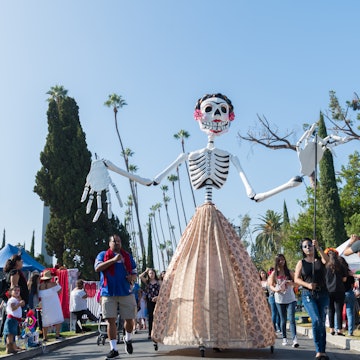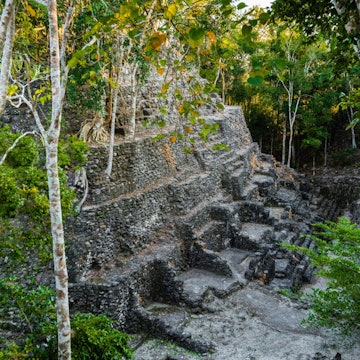

Since our interactions with digital devices have gone into overdrive, screen fatigue can so easily set in. So what better way to unwind and tap into your inner creative child than recording your surroundings on a sketchpad?

There’s no doubt the digital age has left many of us drowning in a tsunami of images delivered daily via Instagram, Facebook and scores of other social media apps – not to mention struggling with our own ever-ballooning online photographic libraries. Victorian-era art critic John Ruskin was way ahead of his time when he urged travellers to lay down that new-fangled contraption known as a camera in favour of pencils, paint and a sketchpad. Pay no mind to the quality of your art, said Ruskin: drawing really is the way to 'see' a place better.

One drawing at a time
Barcelona-born Gabriel Campanario took Ruskin's words to heart when he settled in Seattle in 2006 and turned to his sketchbook as a way of making sense of his new surroundings. Two years later Campanario founded the nonprofit movement Urban Sketchers dedicated to fostering a global community of artists who practice on-location drawing and subscribe to the motto of 'showing the world, one drawing at a time.'
That simple idea has since been embraced by tens of thousands of people around the world, and there are now Urban Sketching groups from Berlin to Buenos Aires who meet regularly to draw and share their creative efforts. It has resulted in an inspiring coffee-table book The Art of Urban Sketching and an annual symposium, held in a different location each year.
The 2020 symposium, set to be held in Hong Kong in April, has had to be cancelled but aspects of the event have moved online – between 10 and 12 April sketchers around the world are invited to post both their sketches of Hong Kong from past visits, and any drawings that communicate a moment of learning or breakthrough – with the hashtags #SketchWithHongKong #USkSketchWithHongKong.
Why urban sketching?
Nine years ago, I joined Urban Sketchers Singapore for one of their regular end of month sketchwalks around the Lion State and began to rediscover a high school skill I'd neglected for over 30 years. I enjoyed the experience so much that ever since, a sketching kit – ink pens, pencils, pocket sketchpad and watercolour kit – has become an essential element of my backpack, accompanying me on my travels around Japan, Malaysia, South Africa, Mexico and many other places I've covered for Lonely Planet.
The practice of taking time out of my research day – usually no more than an hour or so – to sketch has helped me 'see' these places in a different light and in much more detail. It has also been immensely relaxing, fun and a brilliant way to connect with locals and dig deeper into the places I write about. I find people are fascinated by and naturally gravitate towards sketchers. They pause to look at what they're doing. A conversation can start which can lead to friendships being made. When can you say that happened the last time you snapped a photo?

The urban sketching manifesto
The urban sketching movement has an eight-point manifesto, starting with “We draw on location, indoors or out, capturing what we see from direct observation.” Under the current extraordinary circumstances, it’s more than likely that your options for direct observation are restricted to what you can see inside your home or out the windows. The global sketching community has responded to this challenge.
When Italy went into lockdown, Valentina Raiola and her group of urban-sketching friends cancelled their outdoor meetings and encouraged everyone to draw “what we see from our windows,” then to post their efforts online with the hashtag #uskathome (short for “urban sketchers at home”). This rallying cry has since been taken up by many other sketching groups, including the one I run in my hometown of Folkestone, UK.
Another response has been the ingenious use of online mapping tools. Sketching groups are choosing an online location – for example, this week in the case of Kuala Lumpur Urban Sketchers it is the old KL railway station. Use of Google Maps and Google Earth allow sketchers to choose their own angle on this amazing Indo-Saracenic designed colonial structure. Images are then shared using the hashtag #uskvirtual.
Other manifesto points
Our drawings tell the story of our surroundings, the places we live and where we travel. Among the reasons why we take so many photos when we travel is to be able to share our impressions of a location and to remind ourselves of what we saw there. Sketching serves exactly the same purpose, with each drawing being completely unique and personal.
Our drawings are a record of time and place. Sketchbooks make great daily diaries. Just one sketch can be more evocative than scores of photos since you've really taken the time to observe a place and or a particular moment in detail.
We are truthful to the scenes we witness. This doesn't necessarily mean drawing in every tiny detail – for your sanity, you really should avoid this! The best sketches are often done quickly and capture as much the personality of the artist and what they are interested in, as the spirit of a place.

We use any kind of media and cherish our individual styles. The boom in adult colouring books (Lonely Planet has one – Ultimate Travelist Colouring Book) has also seen the market flooded with all kinds of drawing materials – experiment to find the ones that suit your drawing style. It's all about making your own unique mark on a piece of paper. Don't be afraid to be creative in applying colour, too.
We support each other and draw together. Urban Sketching groups are happy to welcome visitors to join in their sketchcrawls. After about an hour of sketching everyone comes back together to show what they've done, swap ideas and share techniques. The same principles apply during this time of online activity only – choose an online group to follow, set yourself a time limit (a hour or two is good) then share your results.
We share our drawings online. This is where digital photography, the Internet and sketching combine in harmony. I've also done some of my sketches on blank postcards which can be shared with family and friends as presents. As well as urban sketching groups you can share your drawings via other institutions such as London’s Royal Academy of the Arts which has started a daily doodle challenge on their Twitter feed.
We show the world, one drawing at a time. Set aside any doubts you have about your ability – just as everyone can write, everyone can draw. Start with something simple – your morning cup of coffee or a flower in a vase. Once you get going, trust me, you'll never see your home or the world in the same way again.
You might also like:
Entertain the kids (and yourself) with these free coloring pages from museums and libraries
7 eerie abandoned places around the world
Four travel memoirs that tackle big issues everyone is dealing with right now
This article was first published in June 2016 and updated in March 2020.














